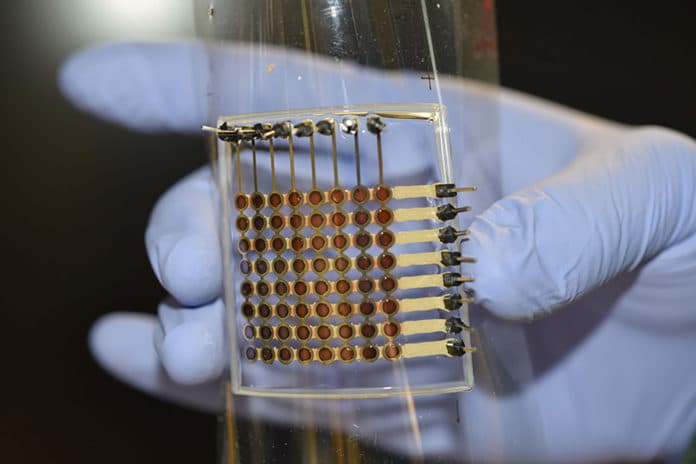Using a customized printer, scientists at the University of Minnesota Twin Cities have 3D printed a flexible organic light-emitting diode (OLED) display. This groundbreaking discovery could lead to low-cost OLED displays in the future.
OLED displays have gained popularity in recent years because they are lightweight, power-efficient, thin, and flexible. They also offer a wide viewing angle and high contrast ratio.
Michael McAlpine, a University of Minnesota Kuhrmeyer Family Chair Professor in the Department of Mechanical Engineering and the senior author of the study, said, “OLED displays are usually produced in big, expensive, ultra-clean fabrication facilities. We wanted to see if we could condense all of that down and print an OLED display on our table-top 3D printer, which was custom built and costs about the same as a Tesla Model S.”
Previously, scientists tried to 3D print OLED displays. But, it was quite challenging to obtain uniformity of the light-emitting layers. Other groups partially printed displays but relied on spin-coating or thermal evaporation to deposit specific components and create functional devices.
In this new study, scientists combined two different printing modes to print the six device layers. This resulted in a fully 3D-printed, flexible organic light-emitting diode display.
The electrodes, interconnects, insulation, and encapsulation was all extrusion printed, while the active layers were spray printed using the same 3D printer at room temperature. The displayed prototype was about 1.5 inches on each side and had 64 pixels. Every pixel worked and displayed light.
Guitar Su, the first author of the study and a 2020 University of Minnesota mechanical engineering Ph.D. graduate who is now a postdoctoral researcher at MIT, said, “I thought I would get something, but maybe not a fully working display. But then it turned out all the pixels were working, and I could display the text I designed. My first reaction was, ‘It is real!’ I was not able to sleep the whole night.”
“The 3D-printed display was also flexible and could be packaged in an encapsulating material, which could make it useful for a wide variety of applications.”
“The device exhibited a relatively stable emission over the 2,000 bending cycles, suggesting that fully 3D printed OLEDs can potentially be used for important applications in soft electronics and wearable devices.”
McAlpine said, “The nice part about our research is that the manufacturing is all built-in, so we’re not talking 20 years out with some ‘pie in the sky vision. This is something that we manufactured in the lab, and it is not hard to imagine that you could translate this to printing all kinds of displays ourselves at home or on the go within just a few years, on a small portable printer.”
Journal Reference:
- Guitar Su et al. 3D-printed flexible organic light-emitting diode displays. DOI: 10.1126/sciadv.abl8798
